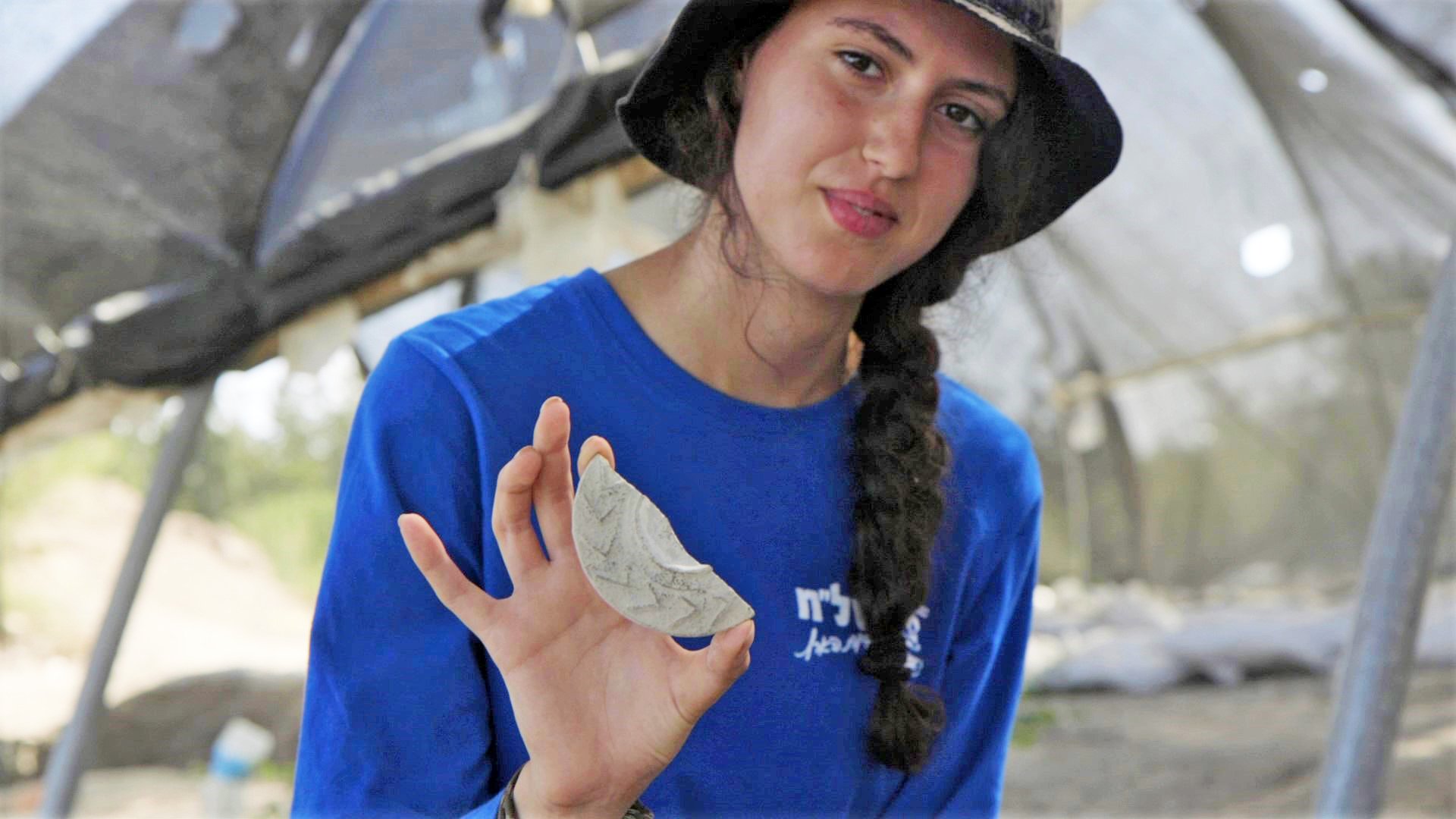
A high-school student participating in an archaeological dig at the ancient site of Usha in Israel happened upon an exceptional, 1,500-year-old artifact.
Seventeen-year-old Aviv Weizman was taking part in the Ministry of Education’s “Survival Course,” which hosts about 500 students. The course invites youths on a 55-mile trek from Mount Meron to Mount Hermon in the western Galilee region, during which they also join archaeological excavations held by the Israel Antiquities Authority.
Weizman’s group was digging at a site in Usha, located near the city of Kiryat Ata in the Haifa region, when she came across a shard of pottery poking out from the ground between the walls of a building.
The artifact discovered by Aviv Weizman. Photo: Israel Antiquities Authority.
She handed the find to Einat Ambar-Armon, the director of the IAA’s Northern Education Center, who immediately recognized it as a mirror plaque from the Byzantine era (4th–6th centuries C.E.).
And it’s not just any mirror. Navit Popovitch, IAA’s curator of Classical periods, termed the relic a “magical mirror,” intended to serve as a safeguard against evil spirits.
“A glass mirror for protection against the Evil Eye was placed in the middle of the plaque. The idea was that the evil spirit… would see his own reflection and this would protect the owner of the mirror,” she explained in a statement.
“Similar mirror plaques have been found in the past as funerary gifts in tombs, to protect the deceased in their journey to the world to come.”
A similar “magical” mirror plaque. Photo: Israel Antiquities Authority.
The “magical mirror” joins the absolute wealth of artifacts that have been unearthed at Usha, a settlement known as one of the seats of the Sanhedrin, the supreme council of ancient Israel, during the 2nd century.
The IAA has led excavations at Usha since 2017, unearthing streets, public buildings, ritual baths, wine presses with mosaic stone floors, and iron objects indicating the practice of metallurgy.
Often helping with the digs are young students and volunteers, such as the group of 100 teens who unearthed and collectively pieced together 12 fragments of an oil lamp.